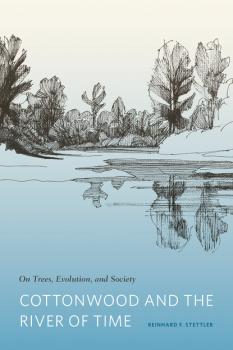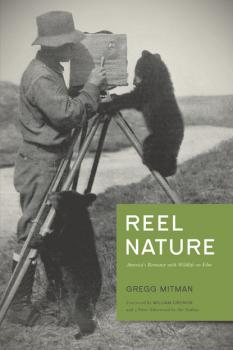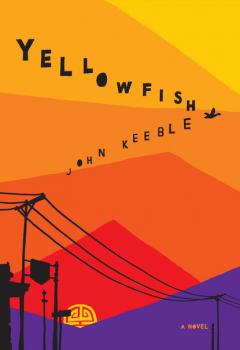MREADZ.COM - много разных книг на любой вкус
Скачивание или чтение онлайн электронных книг.Calamity
June 14, 1903, was a typical, hot Sunday in Heppner, a small farm town in northeastern Oregon. People went to church, ate dinner, and relaxed with family and friends. But late that afternoon, calamity struck when a violent thunderstorm brought heavy rain and hail to the mountains and bare hills south of town. When the fierce downpour reached Heppner, people gathered their children and hurried inside. Most everyone closed their doors and windows against the racket.The thunder and pounding hail masked the sound of something they likely could not have imagined: a roaring, two-story wall of water raging toward town. Within an hour, one of every five people in the prosperous town of 1,300 would lose their lives as the floodwaters pulled apart and carried away nearly everything in their path. The center of town was devastated. Enormous drifts of debris, tangled around bodies, snaked down the valley. The telegraph was down, the railroads were out, and the mayor was in Portland.Stunned survivors bent immediately to the dreadful tasks of searching for loved ones and carrying bodies to a makeshift morgue in the bank. By the next afternoon, thousands of individuals and communities had rushed to the town's aid, an outpouring of generosity that enabled the self-reliant citizens of Heppner to undertake the town's recovery.In Calamity, Joann Green Byrd, a native of eastern Oregon, carefully documents this poignant story, illustrating that even the smallest acts have consequences – good or bad. She draws on a wealth of primary sources, including a moving collection of photographs, to paint a rare picture of how a small town in the West coped with disaster at the turn of the twentieth century.
Cottonwood and the River of Time
Cottonwood and the River of Time looks at some of the approaches scientists have used to unravel the puzzles of the natural world. With a lifetime of work in forestry and genetics to guide him, Reinhard Stettler celebrates both what has been learned and what still remains a mystery as he examines not only cottonwoods but also trees more generally, their evolution, and their relationship to society.Cottonwoods flourish on the verge, near streams and rivers. Their life cycle is closely attuned to the river's natural dynamics. An ever-changing floodplain keeps generating new opportunities for these pioneers to settle and prepare the ground for new species. Perpetual change is the story of cottonwoods – but in a broader sense, the story of all trees and all kinds of life. Through the long parade of generation after generation, as rivers meander and glaciers advance and retreat, trees have adapted and persisted, some for thousands of years. How do they do this? And more urgently, what lessons can we learn from the study of trees to preserve and manage our forests for an uncertain future?In his search for answers, Stettler moves from the floodplain of a West Cascade river, where seedlings compete for a foothold, to mountain slopes, where aspens reveal their genetic differences in colorful displays; from the workshops of Renaissance artists who painted their masterpieces on poplar to labs where geneticists have recently succeeded in sequencing a cottonwood's genome; from the intensively cultivated tree plantations along the Columbia to old-growth forests challenged by global warming.Natural selection and adaptation, the comparable advantages and disadvantages of sexual versus asexual reproduction, the history of plant domestication, and the purposes, risks, and potential benefits of genetic engineering are a few of the many chapters in this story. By offering lessons in how nature works, as well as how science can help us understand it, Cottonwood and the River of Time illuminates connections between the physical, biological, and social worlds.
Reel Nature
Winner of the History of Science Society's Watson Davis and Helen Miles Davis Prize in the History of Science.From the early exploits of Teddy Roosevelt in Africa to blockbuster films such as March of the Penguins, Gregg Mitman's Reel Nature reveals how changing values, scientific developments, and new technologies have come to shape American encounters with wildlife on and off the big screen. Whether crafted to elicit thrills or to educate audiences about the real-life drama of threatened wildlife, nature films then and now have had an enormous impact on how Americans see, think about, consume, and struggle to protect animals across the globe.For more information about the author go to: http://gmitman.com/
Jewish Philanthropy and Enlightenment in Late-Tsarist Russia
The Society for the Promotion of Enlightenment among the Jews of Russia (OPE) was a philanthropic organization, the oldest Jewish organization in Russia. Founded by a few wealthy Jews in St. Petersburg who wanted to improve opportunities for Jewish people in Russia by increasing their access to education and modern values, OPE was secular and nonprofit. The group emphasized the importance of the unity of Jewish culture to help Jews integrate themselves into Russian society by opening, supporting, and subsidizing schools throughout the country.While reaching out to Jews across Russia, OPE encountered opposition on all fronts. It was hobbled by the bureaucracy and sometimes outright hostility of the Russian government, which imposed strict regulations on all aspects of Jewish lives. The OPE was also limited by the many disparate voices within the Jewish community itself. Debates about the best type of schools (secular or religious, co-educational or single-sex, traditional or «modern») were constant. Even the choice of language for the schools was hotly debated.Jewish Philanthropy and Enlightenment in Late-Tsarist Russia offers a model of individuals and institutions struggling with the concern so central to contemporary Jews in America and around the world: how to retain a strong Jewish identity, while fully integrating into modern society.
Yellowfish
Wesley Erks, itinerant machinist and «high class jack-of-all-trades,» takes a hefty fee for smuggling a group of illegal Chinese immigrants («yellowfish») from Vancouver, B.C., to San Francisco in the 1970s. Three are teenaged «Hong Kong boys,» one of whom has been grievously injured. The fourth, a fugitive and the son of a rich Chinese casino owner, means to settle a grudge with a Chinese American secret society, the Triad, but is himself being pursued. The tale of the perilous journey of these five men, along with a woman who becomes implicated in a double-cross, is filled with vivid fictional and historical characters. The whole of it conjures the story of the West itself.Click here for discussion questions for Yellowfish: http://www.washington.edu/uwpress/books/Yellowfish.pdf
Shaping the Shoreline
The Monterey coast, home to an acclaimed aquarium and the setting for John Steinbeck's classic novel Cannery Row, was also the stage for a historical junction of industry and tourism. Shaping the Shoreline looks at the ways in which Monterey has formed, and been formed by, the tension between labor and leisure.Connie Y. Chiang examines Monterey's development from a seaside resort into a working-class fishing town and, finally, into a tourist attraction again. Through the subjects of work, recreation, and environment – the intersections of which are applicable to communities across the United States and abroad – she documents the struggles and contests over this magnificent coastal region. By tracing Monterey's shift from what was once the literal Cannery Row to an iconic hub that now houses an aquarium in which nature is replicated to attract tourists, the interactions of people with nature continues to change.Drawing on histories of immigration, unionization, and the impact of national and international events, Chiang explores the reciprocal relationship between social and environmental change. By integrating topics such as race, ethnicity, and class into environmental history, Chiang illustrates the idea that work and play are not mutually exclusive endeavors.
The Wicked Wine of Democracy
The Wicked Wine of Democracy is a frank account by a political operative and practicing lobbyist who in the early 1950s went from being a journalist in Seattle to working on the campaigns of such important political figures as Warren G. Magnuson, Henry �Scoop� Jackson, Frank Church, William Proxmire, and, finally, John F. Kennedy. He was so successful in managing the media for campaigns across the country that in 1957 the Washington Post labeled him �the Democrat's answer to Madison Avenue.� After Kennedy's victory, Miller opened a lobbying office on Capitol Hill and took on clients as diverse as the United Steelworkers of America, the Western Forest Industries Association, and the Marine Engineers Beneficial Association. In this always revealing and often humorous memoir, Miller reports on the highlights and backroom conversations from political campaigns, labor negotiations, and lobbying deals to give an honest picture of how politics worked over his forty-year career in the nation's Capitol.
B Street
B Street tells intimate stories about the street of shops, restaurants, bars, and brothels where the workmen who built the Grand Coulee Dam spent their recreational hours and wages. From the beginning, B Street was the place to play and let off steam for the white workingmen who had faced the hard times of the Depression. It was a raucous playground that denied blacks and most dark-skinned Indians access to the frivolity, good times, and pretty ladies that were the main attractions of that provocative place.This vivid story of a colorful era is based largely on the memories of Lawney L. Reyes. As a young boy he wandered B Street with his little sister, Luana, and their dog, Pickles, while their Indian mother and Filipino father eked out a living running a Chinese restaurant. His mother's diary and the stories told by his parents and older members of the Sin-Aikst tribe contribute to his story.Reyes tells of hard times, dreams, and extreme courage and reveals the humor, toughness, and recklessness of the adventurers who came to work on the dam. He also describes the history and culture of the Indians whose villages were flooded and whose way of life was irrevocably changed by the building of the Grand Coulee Dam.
The Adventurous Traveler�s Guide to Health
Christopher Allen Sanford, M.D.
The Adventurous Traveler's Guide to Health is just what every traveler needs: a straight-forward look at what you can do to stay healthy during your travels, from start to finish. Whether headed to the urban centers of Africa or the jungles of southeast Asia, there are precautions to be taken even before setting foot on a plane, as well as important things to remember once your travels are over.Chris Sanford aids travelers in first finding a travel health specialist and then knowing exactly which questions to ask. The Adventurous Traveler's Guide to Health will also serve as a take-along guide to help deal with illnesses or symptoms that may arise while you're on the road and as a post-trip reference for any delayed symptoms.Aside from infectious diseases, Sanford also looks at the more common and overlooked problems travelers are likely to encounter, such as health risks in cities (pollution and motor vehicle accidents, for example), traveling if chronically ill or immuno-compromised, and high-altitude sickness. Each of the book's chapters includes a question-and-answer section based on real questions that Dr. Sanford's patients have asked him.General travelers, including students going abroad to study or backpack through the developing world and travelers who want to get off the beaten path as well as explore the cities of the world, will find this an invaluable resource.
The Fishermen's Frontier
In The Fishermen's Frontier , David Arnold examines the economic, social, cultural, and political context in which salmon have been harvested in southeast Alaska over the past 250 years. He starts with the aboriginal fishery, in which Native fishers lived in close connection with salmon ecosystems and developed rituals and lifeways that reflected their intimacy.The transformation of the salmon fishery in southeastern Alaska from an aboriginal resource to an industrial commodity has been fraught with historical ironies. Tribal peoples – usually considered egalitarian and communal in nature – managed their fisheries with a strict notion of property rights, while Euro-Americans – so vested in the notion of property and ownership – established a common-property fishery when they arrived in the late nineteenth century. In the twentieth century, federal conservation officials tried to rationalize the fishery by «improving» upon nature and promoting economic efficiency, but their uncritical embrace of scientific planning and their disregard for local knowledge degraded salmon habitat and encouraged a backlash from small-boat fishermen, who clung to their «irrational» ways. Meanwhile, Indian and white commercial fishermen engaged in identical labors, but established vastly different work cultures and identities based on competing notions of work and nature.Arnold concludes with a sobering analysis of the threats to present-day fishing cultures by forces beyond their control. However, the salmon fishery in southeastern Alaska is still very much alive, entangling salmon, fishermen, industrialists, scientists, and consumers in a living web of biological and human activity that has continued for thousands of years.









